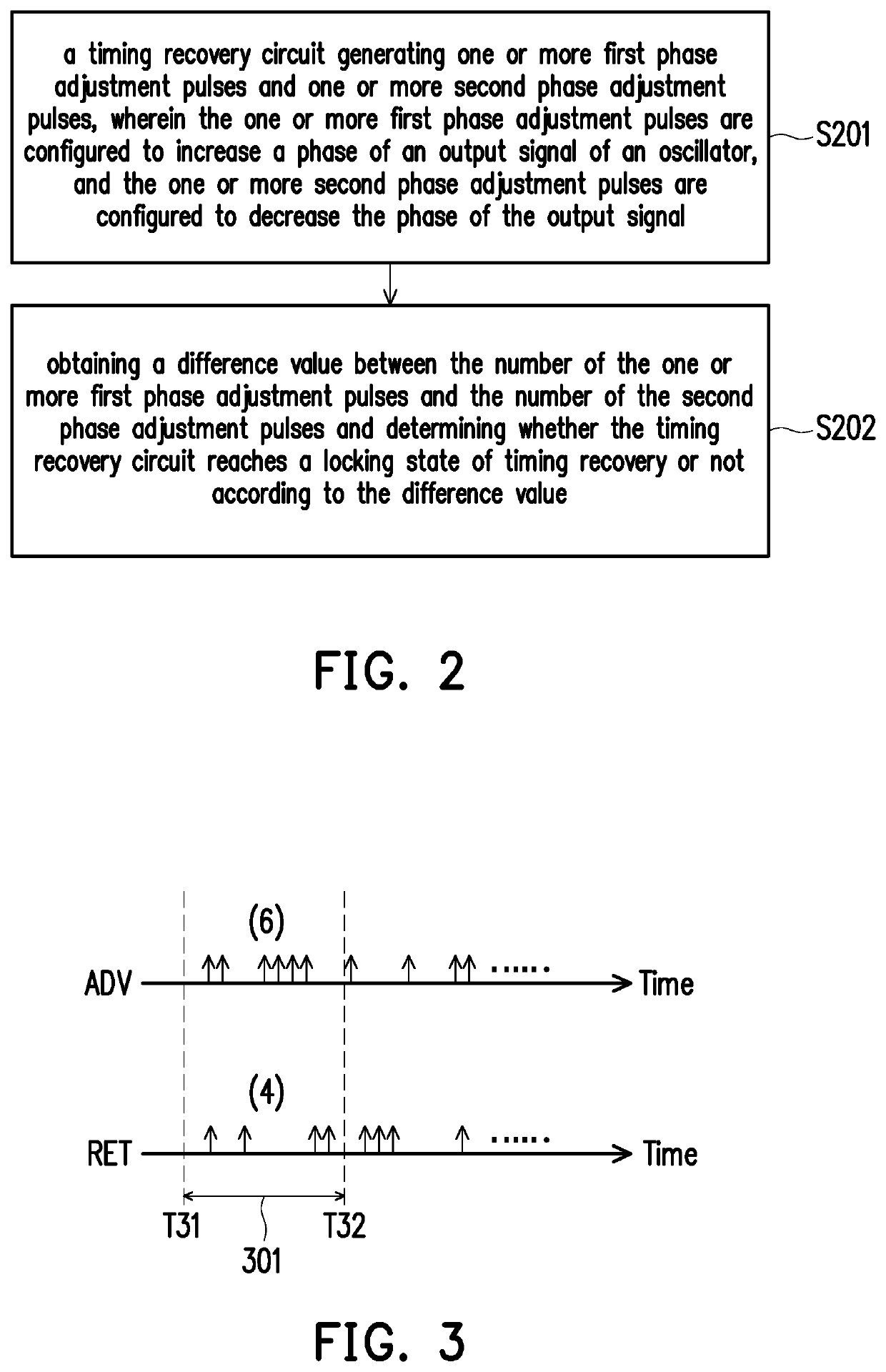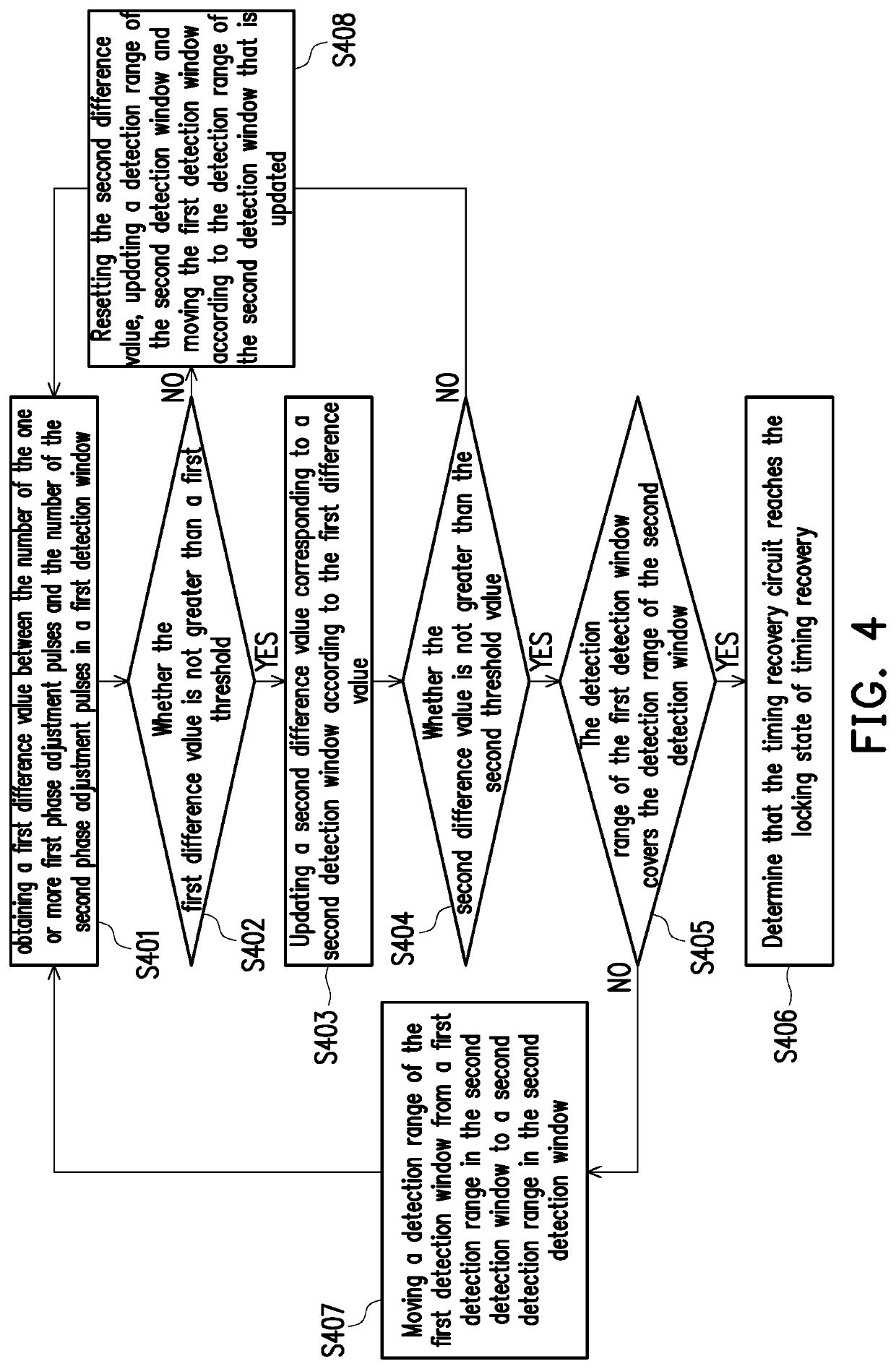Timing lock identification method for timing recovery and signal receiving circuit
- Summary
- Abstract
- Description
- Claims
- Application Information
AI Technical Summary
Benefits of technology
Problems solved by technology
Method used
Image
Examples
Embodiment Construction
[0016]FIG. 1 is a schematic diagram of a signal receiving circuit according to an embodiment of the disclosure. FIG. 2 is a flowchart of a timing lock identification method for timing recovery according to an embodiment of the disclosure.
[0017]Referring to FIG. 1 and FIG. 2, a signal receiving circuit 10 receives a signal S1 (also referred to as an input signal) and performs operations related to signal receiving and adjustment, such as channel compensation, noise filtering and timing error elimination, on signal S1 so as to output a signal S2. The signal S1 may be, for example, an Ethernet signal, and the signal receiving circuit 10 may be set to a network connecting device such as a wired or wireless network interface card.
[0018]The signal receiving circuit 10 includes a receiving circuit 101, a timing recovery circuit 102 and an oscillator 103. The receiving circuit 101 is configured to receive the signal S1 and to perform operations such as channel compensation, noise filtering ...
PUM
 Login to View More
Login to View More Abstract
Description
Claims
Application Information
 Login to View More
Login to View More - R&D
- Intellectual Property
- Life Sciences
- Materials
- Tech Scout
- Unparalleled Data Quality
- Higher Quality Content
- 60% Fewer Hallucinations
Browse by: Latest US Patents, China's latest patents, Technical Efficacy Thesaurus, Application Domain, Technology Topic, Popular Technical Reports.
© 2025 PatSnap. All rights reserved.Legal|Privacy policy|Modern Slavery Act Transparency Statement|Sitemap|About US| Contact US: help@patsnap.com



